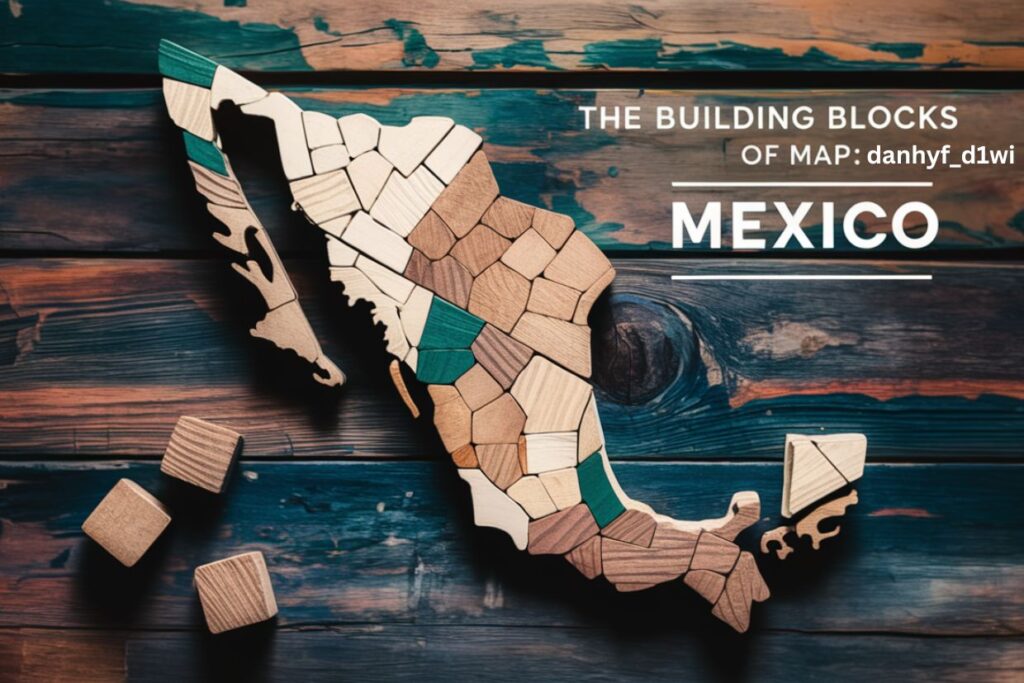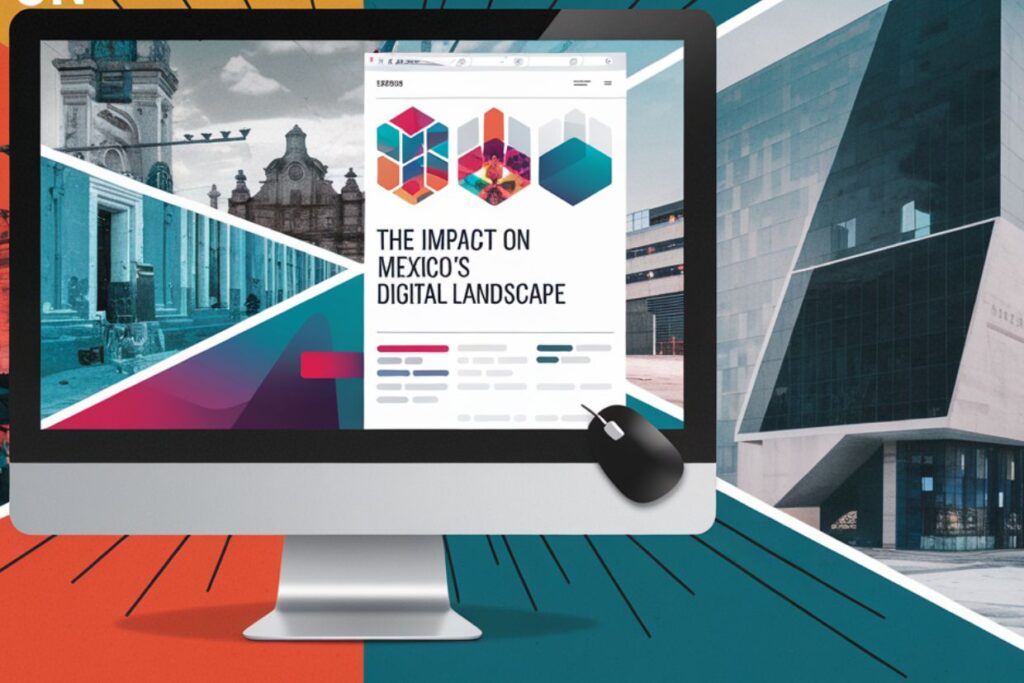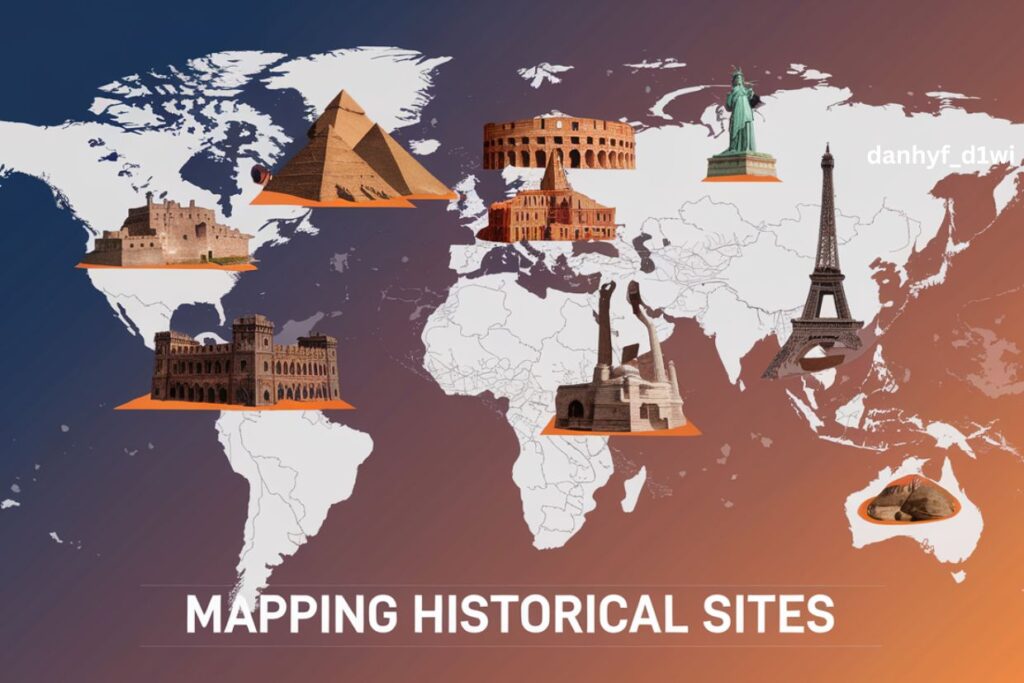Map:danhyf_d1wi= Mexico is a groundbreaking digital mapping system that’s transforming how we understand and interact with Mexico’s geography. This innovative technology combines advanced data management with cutting-edge visualization tools, offering unprecedented insights into Mexico’s landscape, culture, and urban development.
Imagine exploring ancient Mayan ruins through your smartphone or planning a city’s future with pinpoint accuracy. That’s the power of Map:danhyf_d1wi= Mexico. It’s not just changing maps – it’s reshaping Mexico’s digital identity.
From bustling cities to remote wilderness, Map:danhyf_d1wi= Mexico is revolutionizing fields like urban planning, disaster response, and tourism. Let’s dive into this digital revolution and discover how it’s painting a new picture of Mexico for the 21st century.
Decoding Map:danhyf_d1wi= Mexico
At its core, Map:danhyf_d1wi= Mexico is a sophisticated system for managing and analyzing geographical data. But what does that really mean? Think of it as a super-smart librarian for maps, organizing vast amounts of information about Mexico’s land, people, and culture.
The “danhyf_d1wi” part of the name is a unique identifier, like a digital fingerprint for this specific dataset about Mexico. It helps researchers and tech experts quickly find and use the right information. This code is part of a larger system that’s changing how we create, share, and use maps.
Map:danhyf_d1wi= Mexico isn’t just about storing data – it’s about bringing that data to life. It turns dry numbers and coordinates into vivid, interactive maps that anyone can use and understand. From city planners to tourists, this system is making Mexico’s geography more accessible than ever.
The Building Blocks of Map:danhyf_d1wi= Mexico

At its heart, Map:danhyf_d1wi= Mexico is built on a foundation of precise, up-to-date geographical data. This includes everything from the exact locations of streets and buildings to information about terrain, climate, and population density. But it’s not just about collecting data – it’s about making that data useful and accessible.
One key component of Map:danhyf_d1wi= Mexico is its advanced Geographic Information System (GIS). This powerful software allows users to analyze and visualize geographical data in new and exciting ways. It can overlay different types of information, creating maps that show relationships between things like population growth and urban development.
Another crucial element is the system’s use of satellite imagery and aerial photography. These high-resolution images provide an accurate, bird’s-eye view of Mexico’s landscape. When combined with other data in the Map:danhyf_d1wi= Mexico system, they create a comprehensive digital picture of the country.
The Tech Behind the Map
The technology powering Map:danhyf_d1wi= Mexico is a marvel of modern computing. At its core are powerful servers that store and process vast amounts of geographical data. These machines crunch numbers faster than you can say “fiesta,” turning raw data into useful information.
But the real magic happens in the software. Map:danhyf_d1wi= Mexico uses cutting-edge algorithms to analyze and interpret data. These smart programs can spot patterns and relationships that might be invisible to the human eye. They can predict urban growth, track environmental changes, and even help plan efficient transportation routes.
The system also leverages cloud computing, allowing users to access Map:danhyf_d1wi= Mexico from anywhere with an internet connection. This means city planners in Mexico City and conservationists in the Yucatan can work with the same up-to-date information in real-time.
How It Works in Real Life?
Map:danhyf_d1wi= Mexico isn’t just a fancy toy for tech geeks – it’s making a real difference in people’s lives every day. Let’s look at some practical examples of how this system is being used across Mexico.
In Mexico City, urban planners are using Map:danhyf_d1wi= Mexico to design smarter, more efficient public transportation systems. By analyzing data on population density, traffic patterns, and land use, they can identify the best routes for new bus lines or metro extensions. This means less traffic, less pollution, and happier commuters.
In coastal areas, disaster response teams are leveraging Map:danhyf_d1wi= Mexico to prepare for and respond to hurricanes. The system’s detailed topographical data and real-time weather information help them identify areas at risk of flooding and plan evacuation routes. When every minute counts, this technology can literally save lives.
The Impact on Mexico’s Digital Landscape

Map:danhyf_d1wi= Mexico is more than just a cool piece of tech – it’s reshaping Mexico’s entire digital ecosystem. This system is driving innovation across various sectors, from government services to private businesses.
One major impact is in the field of e-government. With Map:danhyf_d1wi= Mexico, government agencies can provide better, more targeted services to citizens. For example, the health department can use geographical data to identify areas with high rates of certain diseases and allocate resources accordingly.
The private sector is also benefiting from this digital geography revolution. Real estate companies are using Map:danhyf_d1wi= Mexico to analyze property values and market trends. Retail businesses are leveraging the system to choose optimal locations for new stores. Even farmers are getting in on the action, using detailed soil and climate data to maximize crop yields.
Urban Development and Planning
Urban planners across Mexico are falling in love with Map:danhyf_d1wi= Mexico, and it’s easy to see why. This powerful tool is helping them create smarter, more livable cities. With access to detailed, up-to-date information about land use, population density, and infrastructure, planners can make more informed decisions about where to build new housing, parks, or schools.
In Guadalajara, for example, city officials used Map:danhyf_d1wi= Mexico to plan a major urban renewal project. By analyzing data on traffic patterns, green spaces, and community needs, they were able to design a project that improved quality of life while preserving the city’s historic character. The result? A vibrant new neighborhood that residents love.
Map:danhyf_d1wi= Mexico is also helping cities tackle tough challenges like affordable housing. By identifying underused land and analyzing property values, planners can find the best locations for new housing developments. This data-driven approach ensures that new homes are built where they’re needed most, helping to address Mexico’s housing shortage.
Disaster Response and Management
When disaster strikes, every second counts. That’s where Map:danhyf_d1wi= Mexico shines in disaster response and management. This powerful tool is helping emergency services save lives and protect communities across the country.
During the 2017 earthquakes in Mexico City, responders used Map:danhyf_d1wi= Mexico to quickly identify damaged buildings and plan rescue operations. The system’s detailed maps of the city’s infrastructure helped teams navigate through debris-filled streets and locate people in need of help. In the aftermath, the same data is now being used to plan reconstruction efforts and improve building safety standards.
But Map:danhyf_d1wi= Mexico isn’t just useful during emergencies – it’s also a key tool for disaster prevention. In flood-prone areas, authorities use the system’s topographical data and weather forecasts to predict which neighborhoods are at risk. This allows them to take preventive measures, like building flood barriers or planning evacuations, before disaster strikes.
The Cultural Significance
It isn’t just about roads and buildings – it’s also playing a crucial role in preserving and promoting Mexico’s rich cultural heritage. This innovative system is helping researchers, historians, and tourists connect with Mexico’s past in exciting new ways.
Archaeologists are using it to document and study ancient sites across the country. The system’s high-resolution satellite imagery can reveal hidden structures and help plan excavations. In the Yucatan Peninsula, researchers used this technology to discover previously unknown Mayan ruins hidden beneath the dense jungle canopy.
Museums and cultural institutions are also leveraging it to create interactive exhibits. Visitors can explore digital maps that show how cities have changed over time, or take virtual tours of historical sites. This technology is making Mexico’s cultural treasures more accessible than ever, both to locals and to people around the world.
Mapping Historical Sites

It is revolutionizing how we study and preserve Mexico’s historical sites. This powerful tool is giving archaeologists and historians new ways to explore and document the country’s rich past.
In the ancient city of Teotihuacan, researchers are using it to create detailed 3D models of the pyramids and other structures. These digital reconstructions help scholars understand how the city was built and how it evolved over time. They also allow visitors to experience the site in new ways, like taking virtual tours or seeing how the pyramids looked when they were first built.
It is also helping to protect historical sites from threats like urban development and climate change. By mapping these sites and the areas around them, authorities can better manage land use and prevent damage to important cultural resources. For example, in the colonial city of Guanajuato, planners used this data to design new infrastructure projects that preserve the city’s historic character.
See also this: eTrueSports Codes – Unlock Exclusive Offers and Discounts
Promoting Tourism
Tourism is a vital part of Mexico’s economy, and it is giving it a serious boost. This innovative system is changing how tourists explore Mexico, making trips more enjoyable and helping visitors discover hidden gems.
Travel apps powered by it offer super-accurate navigation, even in remote areas. Tourists can easily find their way to popular attractions, restaurants, and hotels. But it’s not just about getting from A to B – these apps also provide rich information about points of interest, helping travelers learn about the history and culture of the places they visit.
Tour operators are using it to create unique, tailored experiences for their clients. By analyzing data on tourist preferences and travel patterns, they can design itineraries that hit all the right spots. This personalized approach helps ensure that every visitor has a memorable trip.
The Future of Map:danhyf_d1wi= Mexico
As exciting as Map:danhyf_d1wi= Mexico is today, the future looks even brighter. This system is evolving rapidly, with new features and capabilities being added all the time. Let’s take a peek at what’s coming down the pike.
One major trend is the integration of artificial intelligence and machine learning. These technologies will make it even smarter, able to analyze data and make predictions with incredible accuracy. Imagine a system that can forecast traffic jams before they happen, or predict changes in land use based on economic trends.
Another exciting development is the use of drones to collect geographical data. These flying cameras can capture high-resolution images and 3D scans of the landscape, providing even more detailed and up-to-date information for it. This could be especially useful for monitoring remote areas or tracking changes in the environment over time.
Integration with Augmented Reality

One of the most exciting frontiers for it is its integration with Augmented Reality (AR) technology. This combo is set to transform how we interact with our surroundings in Mexico, blending the digital and physical worlds in mind-blowing ways.
Imagine pointing your smartphone at a street in Mexico City and seeing an overlay of historical information, restaurant reviews, or even real-time traffic data. That’s the power of it combined with AR. Tourists could take self-guided tours, learning about landmarks and hidden gems as they explore. Urban planners could visualize proposed changes to the cityscape, seeing how new buildings would look before they’re built.
This technology isn’t just cool – it’s practical too. Construction workers could use AR glasses to see underground pipes and cables, making excavation safer and more efficient. Emergency responders could quickly identify evacuation routes or danger zones during a crisis. The possibilities are endless, and they’re all powered by the rich, accurate data of it.
Environmental Conservation
Map:danhyf_d1wi= Mexico is proving to be a game-changer in the field of environmental conservation. This powerful tool is helping researchers and policymakers protect Mexico’s diverse ecosystems and tackle pressing environmental challenges.
In the lush rainforests of Chiapas, conservationists are using it to track deforestation. By analyzing satellite imagery over time, they can identify areas where illegal logging is occurring and take action to stop it. The system’s detailed topographical data also helps in planning reforestation efforts, ensuring that new trees are planted in areas where they’re most likely to thrive.
Climate change is another area where it is making a big impact. Scientists are using the system to model how rising temperatures and changing rainfall patterns might affect different regions of Mexico. This information is crucial for developing adaptation strategies, like designing flood-resistant infrastructure or identifying crops that will be suitable for future climate conditions.
Final Thoughts
Map:danhyf_d1wi= Mexico is changing how we see and use Mexico’s geography. It’s not just a fancy map system. It’s a powerful tool that helps people in many different ways.
This technology is making cities better and safer. It’s helping protect nature and old buildings. It’s even making trips more fun for tourists.
As Map:danhyf_d1wi= Mexico grows, it will do even more cool things. It might use smart computers or work with special glasses to show information. The future of Mexico’s maps looks very exciting!
Frequently Asked Questions
What exactly is Map:danhyf_d1wi= Mexico?
Map:danhyf_d1wi= Mexico is a cutting-edge digital mapping system that combines advanced data management with visualization tools to provide detailed insights into Mexico’s geography, culture, and urban landscape.
How does it benefit everyday users?
Everyday users benefit from more accurate navigation apps, better urban planning leading to improved city services, and enhanced tourism experiences with rich, location-based information.
Can other countries use this system?
While this specific system is tailored for Mexico, similar digital mapping technologies can be and are being developed for other countries, adapting to their unique geographical and cultural features.
Is my personal data safe with this system?
Map:danhyf_d1wi= Mexico primarily deals with geographical and cultural data, not personal information. However, any user data collected through apps using this system would be subject to standard data protection regulations.
How can I learn more about digital mapping?
To learn more about digital mapping, you can explore online courses in Geographic Information Systems (GIS), join local mapping communities, or check out resources from organizations like the International Cartographic Association.
George is a dedicated author at Trendstray.com, specializing in the technology category. With a keen interest in emerging tech trends and innovations, George consistently delivers clear and engaging content that helps readers stay informed. His attention to detail and passion for technology ensure that each article is both comprehensive and accessible, offering valuable insights for navigating the fast-paced digital world.